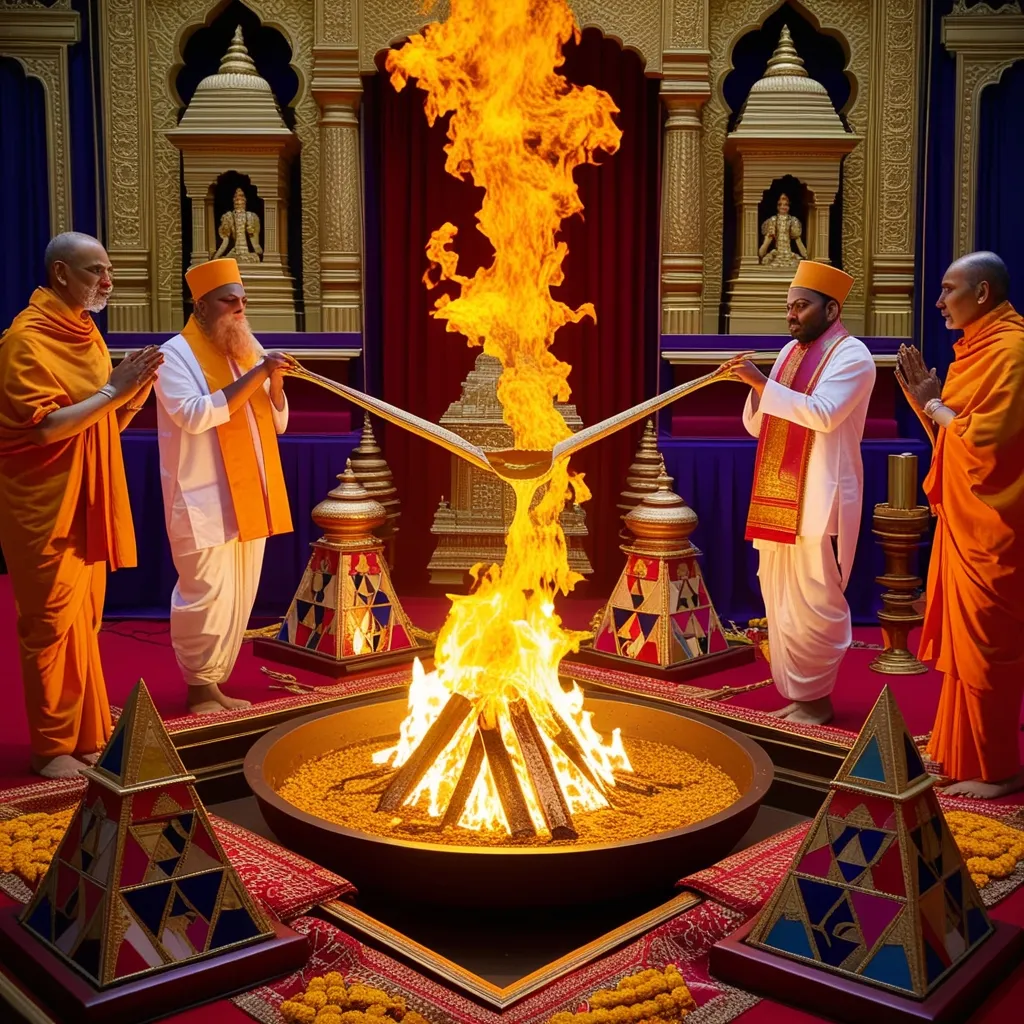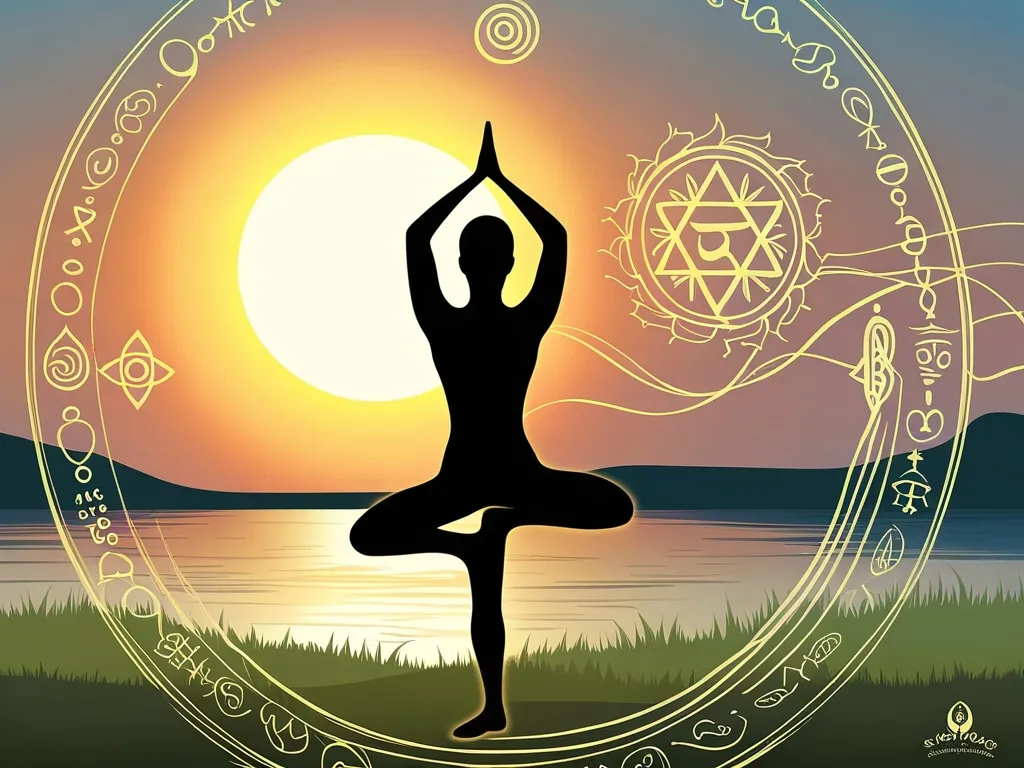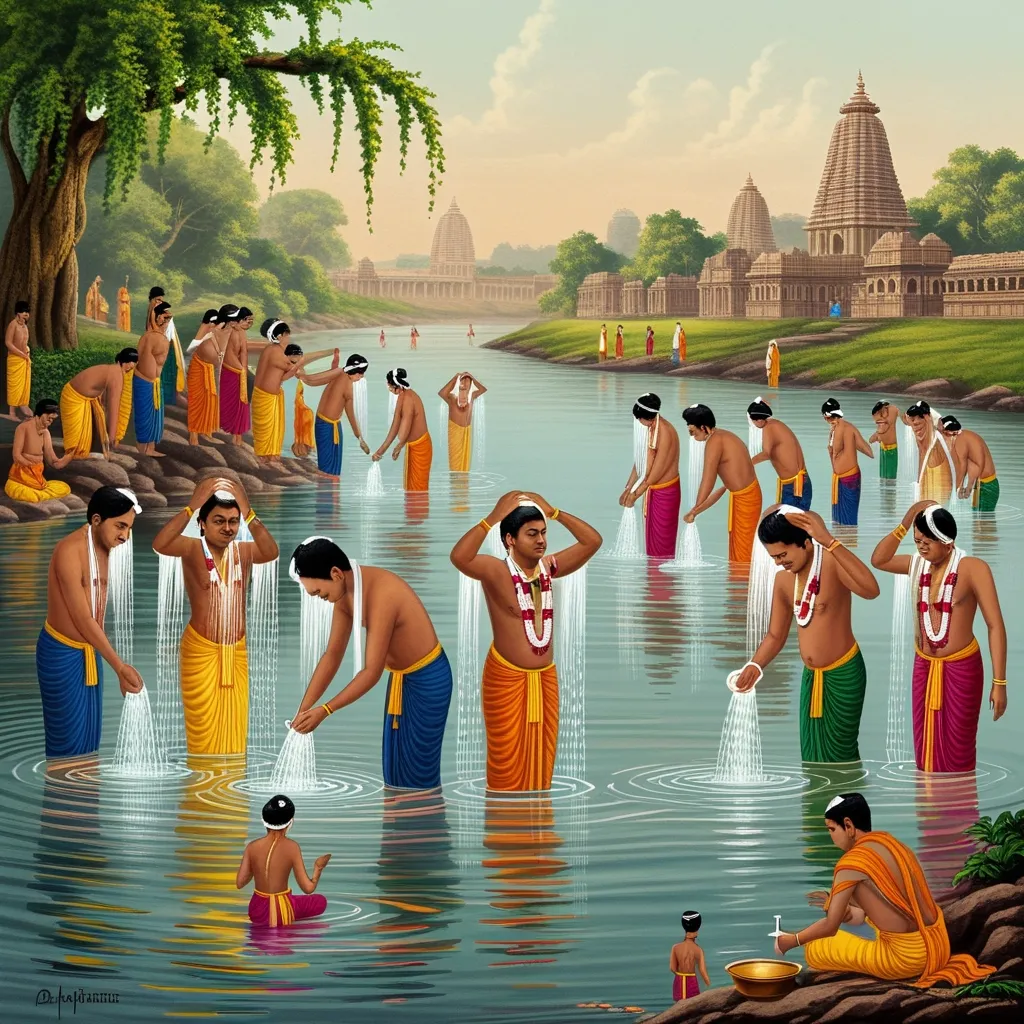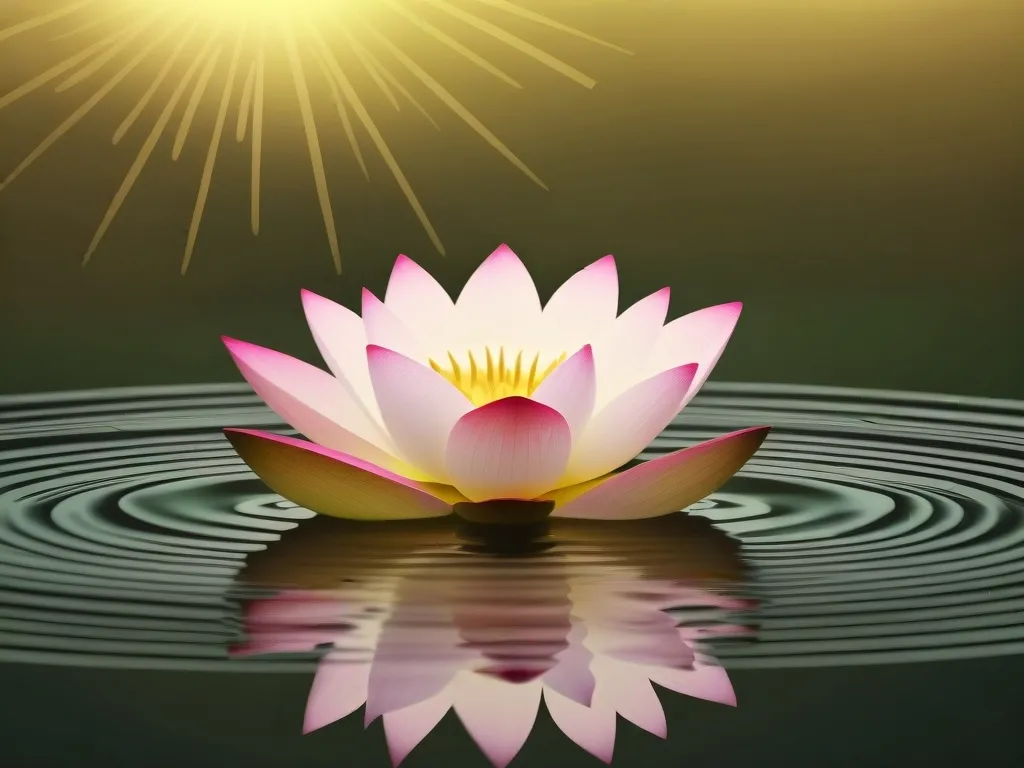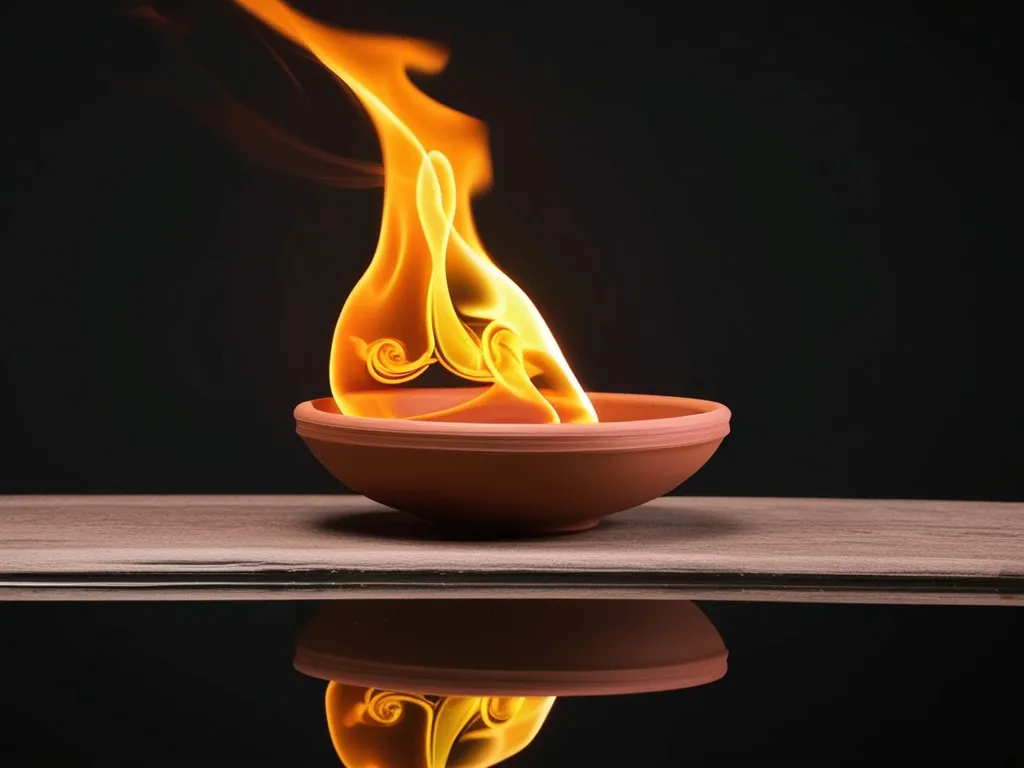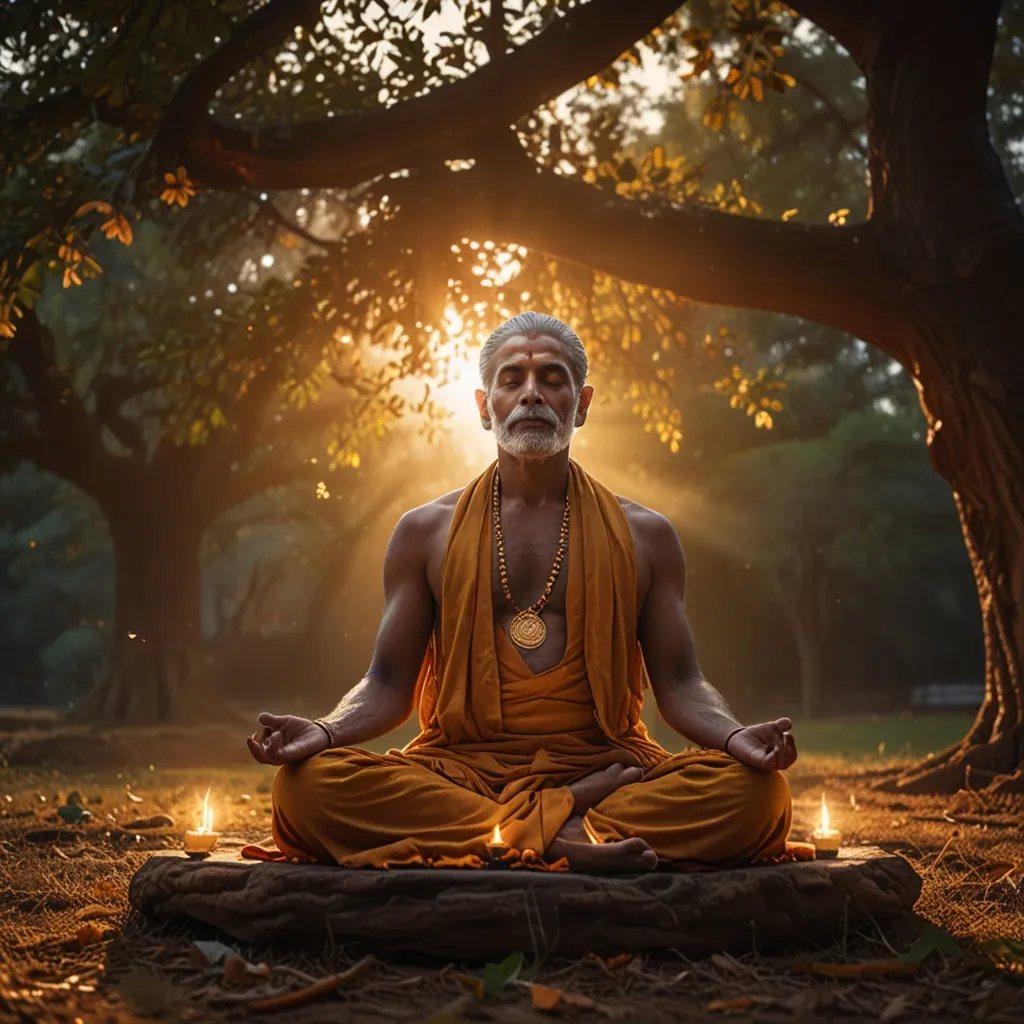In the vast ocean of Hindu scriptures, the Yajurveda shines as one of the quintessential guides for ritualistic practices. Picture this: a grand ceremony with priests chanting ancient mantras, a sacred fire blazing, and golden streams of ghee—clarified butter—feeding the flames. This scenario captures the essence of the yajna, or fire ritual, which forms the core of many Hindu traditions, deeply influenced by the wisdom of the Yajurveda.
The Magic of Ghee in Rituals
If you’re imagining ghee as just a cooking ingredient, think again. In Hindu rituals, ghee holds a status that’s almost celestial. Far from being merely butter, it’s seen as a conduit of fertility, prosperity, and renewal. When priests pour ghee into the ritual fire, it’s not just a physical act. It’s a sacred moment, regarded as an act of creation, echoing through ancient hymns that call ghee the “tongue of the gods” and the “navel of immortality.”
This isn’t just poetic license. The act of offering ghee to the fire, revered as the god Agni, is believed to have transformative powers. The fire is said to relish the ghee, which helps it burn brighter and purer, converting the offerings into divine energy. This leads to successful rituals, invoking blessings and prosperity.
The Intricacies of Yajna
Imagine you’re at a yajna—a meticulously planned and executed ritual. The square altar, known as the Vedi, is crafted with precise geometric precision, reflecting the advanced mathematical and philosophical ethos of ancient India. Multiple priests are involved, each with a specific role, and together they create a profound spiritual drama.
Here, ghee isn’t just an offering. It’s a vital part of the ceremony. Take the Agnicayana ritual, for example. As the priests recite verses from sacred texts, ghee is poured into the fire to call upon the gods. These verses aren’t just words; they’re powerful invocations that ensure the success of the ritual, linking the material world with the divine.
Ghee at Hindu Weddings
The sacred fire in Hindu weddings is another scene-stealer, where ghee plays a lead role. During the ceremony, known as the vivaah, ghee is poured onto the fire to symbolize creation and new beginnings. The couple, pledging their lives to each other, take seven symbolic steps around the fire, known as the Saptapadi, sealing their vows with Agni as their witness. It’s not just a ritual; it’s a legal and sacred binding, marking the start of a lifelong journey together.
Philosophical and Cultural Depth
The use of ghee in these rituals isn’t just about following tradition; it’s imbued with deep philosophical meaning. Imagine the transformation: raw butter turning into something pure and divine. This act symbolizes the individual’s spiritual journey—burning away the ego and desires to achieve enlightenment. Pouring ghee into the fire means surrendering oneself to the divine, seeking purification.
Beyond the personal transformation, these rituals underscore community and shared spiritual experiences. They unite people, fostering a collective path towards spiritual growth. The Yajurveda’s detailed descriptions ensure these rituals are performed with utmost respect and accuracy, preserving their sanctity across generations.
Priests and Their Mantras
An unsung hero in these ceremonies is the priest. These learned men recite specific mantras, invoking various Vedic deities. During the Agnicayana, for instance, chants from the Taittiriya Samhita call upon deities like Savita and Agni to sanctify the ritual. These mantras are more than just words. They act as bridges connecting the human and the divine, turning each ceremony into a rich, transformative experience.
A Glimpse into Spiritual Heritage
The Yajurveda is more than an ancient text. It’s a window into the rich spiritual heritage of Hinduism, where rituals like the yajna draw from its wisdom. The use of ghee in these rituals is a testament to the deep symbolism and philosophical roots of Hindu practices. Ghee isn’t just an ingredient—it’s a symbol of purity, transformation, and divine connection.
Whether in a grand yajna or an intimate wedding, ghee remains a cornerstone, embodying the quest for purity and spiritual enlightenment. This practice, rooted in ancient times, continues to inspire and guide Hindus around the world, connecting them to their ancestral heritage and spiritual aspirations. It’s a reminder that in every drop of ghee lies the potential for divine connection, just as in every act of devotion lies the path to spiritual fulfillment.
